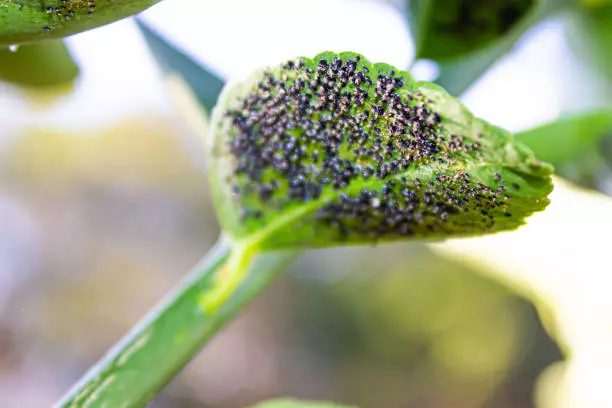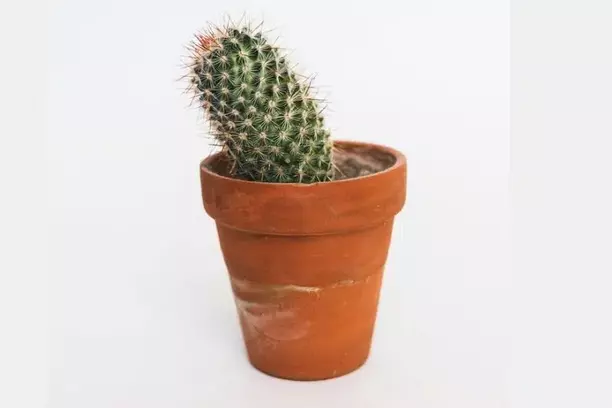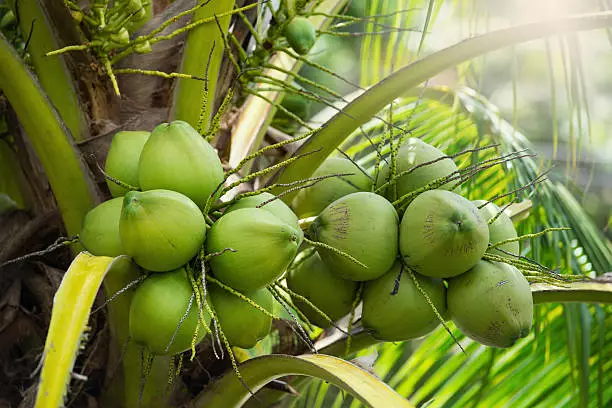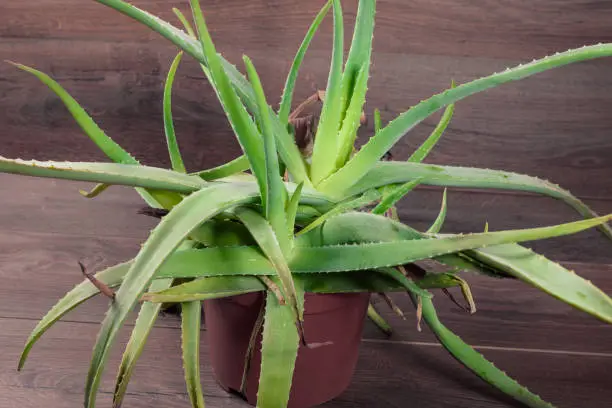Trees play a vital role in our environment, providing shade, improving air quality, and supporting wildlife habitats. However, it is essential to consider the root system of the tree species before planting them in residential or urban areas. Some trees have aggressive or invasive root systems that can cause damage to underground utilities, sidewalks, and foundations. Planting trees with non-invasive roots can help prevent such problems and promote a healthy, thriving urban forest.
There are several tree species with non-invasive roots, ideal for yards, streetscapes, and small spaces. These trees grow well in various conditions and require minimal maintenance while not posing a threat to infrastructure or nearby plants. Selecting the right non-invasive tree ensures that it coexists harmoniously with its surroundings, providing all the benefits of a beautiful, healthy tree without causing damage or disruptions.
In this article, we will discuss some popular tree species with non-invasive roots, suitable for diverse landscapes and environments. Considerations such as climate, soil type, and available space are vital when choosing the appropriate tree species. By selecting a tree with non-invasive roots, you can enjoy all the advantages that trees offer while ensuring the integrity and safety of your property and environment.
Characteristics of Trees with Non-Invasive Roots
Trees with non-invasive roots are ideal for urban landscapes or small gardens, presenting minimal risk to nearby structures, utilities, and paving. Selecting the right type of tree for a specific location can enhance the aesthetics and functionality of the outdoor space. This section will focus on two categories, deciduous and evergreen trees.
Deciduous Trees
Deciduous trees shed their leaves seasonally, providing visual interest and shade during the warmer months, while letting sunlight in during the cooler months. Examples of deciduous trees with non-invasive roots include:
- Trident Maple (Acer buergerianum): Adaptable to various soil types, this tree is known for its attractive foliage that turns from green to a vibrant orange in autumn. The Trident Maple thrives in zones 5-9.
- Eastern Redbud (Cercis canadensis): With vibrant pink flowers and heart-shaped leaves, the Eastern Redbud adds a burst of color to a landscape and attracts pollinators. It grows well in zones 4-9 and prefers well-drained soil.
- Chaste Tree (Vitex agnus-castus): Offering fragrant blooms and attractive gray foliage, the Chaste Tree is drought tolerant and adaptable to different soil types. It is well-suited for zones 6-9.
Evergreen Trees
Evergreen trees maintain their foliage throughout the year, offering consistent shade and visual interest. Some notable evergreen trees with non-invasive root systems include:
- Arbutus Marina (Arbutus ‘Marina’): This tree produces reddish-brown bark, beautiful flowers, and an edible orange fruit, while its roots pose minimal risk to nearby structures. The Arbutus Marina thrives in zones 7-10.
- Holly (Ilex spp.): Available in various sizes and forms, Holly trees boast glossy green leaves and striking red berries. They prefer well-drained soil and are suitable for zones 5-9.
In conclusion, selecting a tree with non-invasive roots is not only beneficial for the immediate landscape but also for the surrounding environment. Deciduous and evergreen trees offer a wide variety of options in terms of foliage, visual appeal, and adaptability to soil and climate conditions.
Selecting a Tree with a Non-Invasive Root System
When choosing a tree for your landscape, it’s crucial to consider its root system. Opting for a tree with a non-invasive root system not only minimizes potential damage to your property but also enhances the overall health and stability of the tree. The ideal trees would have a taproot or smaller, non-aggressive lateral roots, ensuring minimal disruption to your landscape.
Trees with small root systems are less likely to cause damage to hardscape elements such as sidewalks, driveways, and foundations. They also tend to require less maintenance, as their less extensive roots reduce the chances of causing drainage issues. Additionally, trees with non-invasive roots are typically more drought-tolerant, relying on their well-adapted root structure to survive in various conditions.
Certain tree species exhibit non-invasive root characteristics, making them suitable choices for your landscape:
- Taproot trees: These trees have a dominant central root, known as a taproot, which grows vertically downwards. They often have fewer lateral roots which minimize the chances of surface damage. Species with taproot systems include oaks, hickories, and black walnut trees.
- Trees with shallow, fibrous root systems: Trees like dogwoods, redbuds, and Japanese maples have shallow, non-aggressive roots that do not interfere with surrounding structures. Their roots spread horizontally but are unlikely to cause damage to nearby hardscapes.
When selecting a tree with a non-invasive root system, it’s also essential to consider factors such as soil type, climate, and available space. Providing adequate space for the tree to grow and a suitable environment for its specific needs enables its root system to develop healthily and minimizes any potential harm to your property. Consulting with a local arborist or horticulturist can guide you in selecting the best tree species for your landscape, ensuring their roots remain non-invasive and enhance your property’s overall aesthetic.
Popular Trees with Non-Invasive Roots
When choosing trees for your landscape or garden, selecting those with non-invasive roots can help prevent damage to sidewalks, driveways, and plumbing systems. Many popular trees are known for their small root systems, hardiness, and adaptability to a variety of climatic conditions.
Crabapple trees, such as the Adams crabapple, are excellent choices for their non-invasive roots and fragrant spring blooms. Apple trees, too, provide beauty with their blossoms and the added benefit of delicious fruit. Both crabapple and apple trees are suitable for various hardiness zones across the United States.
Japanese maples (Acer palmatum) are another favored option, known for their intricate leaf patterns and elegant branching structure. Similarly, Kousa dogwoods provide year-round interest with white or pink blossoms in the spring, followed by vibrant red fruits in the fall.
American hornbeam and its cousin, the hornbeam, exhibit strong resistance to heat and have minimal root spread, making them ideal choices for urban landscapes. Magnolia trees, including star magnolia, offer large, fragrant flowers and compact root systems that won’t disrupt nearby structures.
Fruit-bearing trees like plum, citrus, olive, and apricot are well-suited for home gardens. These trees have non-invasive roots and produce bountiful harvests. Loquat and dwarf plum trees are popular options for smaller yards, while bronze loquat and dwarf Korean lilac shrubs thrive in limited space.
Crepe myrtle (Lagerstroemia indica) and crape myrtle are sought after for their colorful summer blooms and small root systems. They come in many sizes, from small shrubs to tall trees, and can tolerate various climates from Florida to colder regions.
Chinese pistache and its relative, Chinese pistachio, adapt to urban environments thanks to their non-invasive roots and resistance to heat, drought, and air pollution. Eastern redbuds and callery pear trees add spring blossoms to gardens without the risk of damaging nearby structures or plumbing pipes.
A few more tree options that have non-invasive roots and attractive features include trident maple, skyrocket juniper, Hollywood juniper, red tip photinia, and frangipani. Tibouchina and camellias are versatile plants, depending on the variety, they can be grown as shrubs or small trees.
Frequently Asked Questions
What are the best trees for small root systems?
Some trees have smaller, non-invasive root systems, making them perfect for planting in urban or suburban landscapes. A few popular choices for trees with small root systems include the Japanese Maple, Amur Maple and Crape Myrtle. These trees offer beautiful foliage, flowers, and interesting branch structures, while their compact root systems minimize the risk of damage to sidewalks, foundations, or underground utilities.
What are some shade trees with non-invasive roots?
Shade trees are prized for their ability to cool outdoor spaces and provide a respite from the sun. Some shade trees with non-invasive root systems include the American Hornbeam, Eastern Redbud, and the Golden Rain Tree. These trees can provide valuable shade without causing damage to nearby structures or utilities with their roots.
Which trees have deep rooting systems?
Trees with deep rooting systems are also known as taprooted trees, and they send their primary root deep into the soil. These trees include Oak, Walnut, and Pecan trees. Their deep roots can help prevent soil erosion and access water and nutrients in lower layers of the soil. However, they may not be suitable for planting near foundations or septic systems, as their roots can potentially cause damage.
What trees can be safely planted near a home?
When selecting trees to plant near a home, it’s essential to consider those with non-invasive root systems to minimize potential damage. Some popular choices are the Dogwood, Serviceberry, and Witch Hazel. These trees provide attractive flowers and foliage without harming foundations, underground utilities, or sidewalks. In general, make sure to allow sufficient space between your house and any tree, considering both the mature tree’s height and width.
What are some evergreen trees with shallow roots?
Evergreen trees with shallow roots can provide privacy and year-round foliage to your landscape. Some examples include the Arborvitae, Holly, and Fir trees. However, shallow-rooted trees may not fare well in environments with high winds or limited water availability. Be sure to provide these trees with adequate care, such as regular watering and occasional pruning, to ensure their success.
How do non-invasive root systems differ from invasive ones?
Non-invasive root systems are generally less aggressive and spread over a smaller area than invasive root systems. Trees with non-invasive roots are more suitable for urban or suburban environments, as they are less likely to cause damage to nearby structures, utilities, or landscapes. Invasive root systems, on the other hand, may grow aggressively and cause damage to sidewalks, foundations, or underground utilities, making these trees less suitable for small or crowded spaces.
References
- Purdue University. (n.d.). Question: Can tree roots cause damage to a home’s foundation? Retrieved from https://www.purdue.edu/fnr/extension/question-can-tree-roots-cause-damage-to-a-homes-foundation/
- Iowa State University Extension and Outreach. (1992, April 1). Tree Roots and Foundation Damage. Retrieved from https://hortnews.extension.iastate.edu/1992/4-1-1992/treeroot.html
- University of Wisconsin-Madison Division of Extension. (2017). Our Most Common Trees and Shrubs [PDF]. Retrieved from https://fyi.extension.wisc.edu/sewmg/files/2017/03/Our-Most-Common-Trees-and-Shrubs-LoRes.pdf



